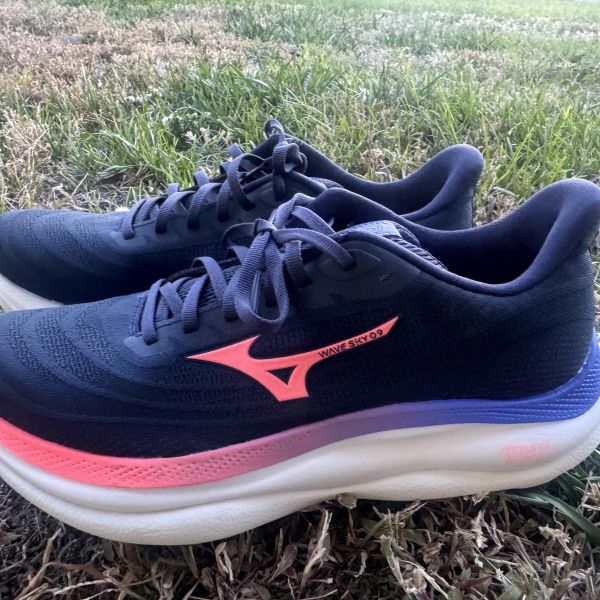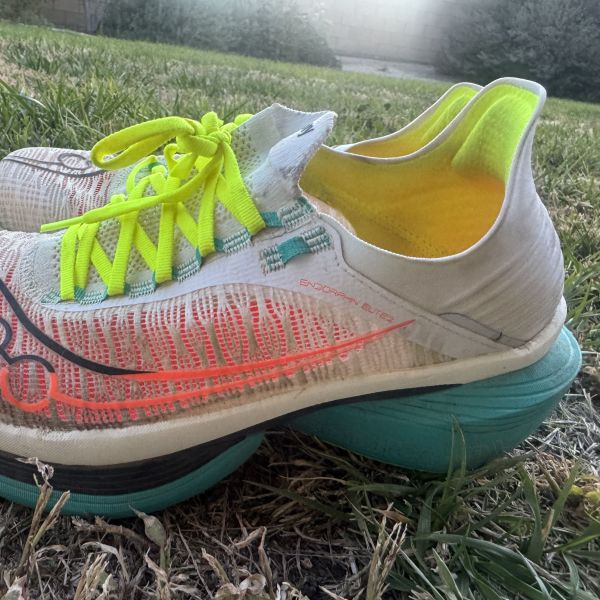Run 100 miles. Even the most experienced runners will tell you it's hard.
But there's still no guarantee all your efforts will get you to the finish line trying to run 100 miles.
What if your attempt to run 100 miles ends with a DNF and some epic vomiting?
Here's what you need to know...
When I showed up to run the Mountain Lakes 100-Mile Ultra in September in Oregon's Mt. Hood National Forest, I was ready.
I did all the right things leading up to race day.
And there was a couple other things that prepared me to run 100 miles:
But if there's one thing I've learned since running my first 100-miler 11 years ago, it's this...
No matter how well you train and prepare to run 100 miles, you never quite know how it's going to turn out.
I showed up to run the Mountain Lakes 100-mile ultra with a group of 136 runners. And I felt like I was well trained (and experienced) to go the distance.
Here's what happened:
Near-perfect running weather. That's a good way to describe the start of the race, especially after rain, slosh and mud in 2021.
It's mostly a downhill trip back to Timothy Lake. I shed my top layer for a dri-fit shirt and stuffed my gloves in my pack.
And fueling was right on schedule every 30-minutes:
I clear the Little Crater Lake Aid station on the way back.
Pretty soon, I meet my crew, Steven Watts, at the Timothy Lake Dam.
I refuel and restock at the Timothy Lake Dam, lather on BodyGlide to prevent chafing.
Then I make the short trip to the Clackamas Lake Ranger Station.
So I make the climb up to the Red Wolf Aid Station.
Sometime after leaving the Clackamas Lake Ranger Station in the heat of the day, I can tell my stomach is starting to turn.
It sort of works.
While I'm sitting in a chair contemplating the next 60-ish miles, my friend Jessica Langford rolls in.
She grabs a quesadilla and gives me a nudge: "Come on man, let's go."
When I tell her my stomach isn't right, and throw-up is a real possibility, she says:
"No, don't do that. I'm a sympathetic puker."
I manage to leave Red Wolf without puking, but eating and drinking is way off.
Running 100 miles this way isn't sustainable.
I force-feed myself to drink and down some vanilla-flavored PowerGel.
I stagger into the Warm Springs Aid station and lay down...for 30 minutes...hoping to help my stomach rest.
But it's not enough.
I rally long enough to stand up, put on my pack and go.
But a half-mile down the trail it happens....
🤮Vomiting.
I'm down on my hands and knees.
Coughing...sputtering...emptying what little was in my stomach to begin with.
And then I feel amazing. So I run, hike, run to get to Pinheads.
From Pinheads Aid Station to Olallie Meadows there was more vomiting in the dark.
During another episode, a runner stopped to ask if I needed any help or if I wanted him to notify the next aid station.
"I'm OK," I muttered between dry heaves.
I ran-walked to Olallie Meadows. I was a couple hours later than predicted.
And by some Bermuda-triangle of events, my crew wasn't there.
I pushed to get to Olallie Meadows...
My stomach was still on the edge. I didn't want to eat or drink anything.
And it could have been a convenient spot to drop, knowing the 9 a.m. cutoff was rapidly getting closer.
That's when aid station volunteer and veteran ultrarunner Denzil Jennings stepped into the warming tent.
He brewed up a cocktail of chicken broth and mashed potatoes, handed it to me and said:
"You gotta go. You have to leave here by 1 a.m. Take the broth, walk out of here, and sip it as you go."
And that's what I did.
My stomach was still upset, but it had been a couple hours since my last vomiting.
I tried to focus on moving forward, and not the disappointment of missing my crew.
Walk the uphills. Run the downhills. My stomach finally started feeling a little better.
Maybe, just maybe, I could still make the 9 a.m. cut off at 83 miles.
But by the time I reached the Historic Clackamas Lake Ranger Station, it was around 9:30 a.m.
Stomach issues cost me too much time.
Even though I was feeling much better, and capable of running the rest of the race, this was the end.
Another DNF at this race:
I met up with my crew, Steven Watts, grabbed a chair and a blanket, and gulped down four glasses of chocolate milk.
So when you train hard for months to run a race, only to end with a DNF, how do you 'stomach' it?
It's hard when you put so much time and effort into training for a race, and things don't go as planned.
Trust me. I know what it's like. I've ran 14 100-mile races (9 finishes, 5 DNFs)
Want to know how to bounce back after a DNF?
These 5 tips will help you keep going.
Did you train enough to go the distance?
Be honest. Prepping to run a 100-mile race is hard. It takes time. It requires consistent effort for months.
If your training fell apart weeks or months before you got to the starting line, what happened?
We're you prepared for things like:
Take a closer look at how you prepared for the race, and look for ways to improve. And ask for help from a coach or experienced runner.
Note: I trained really well for this race. About 5 weeks out, I ran a 57 miles to Timberline Lodge at Mount Hood. Along the way, I fell crossing the Sandy River near Ramona Falls. It seemed fine at the time, but a few days later my ankle wasn't happy. And I had to change my training plans a bit.
There's nothing wrong with a DNF. It happens, especially when it comes to running 100-mile ultramarathons.
In fact, you can turn it into a learning opportunity.
Those are two great questions to ask yourself about your hydration habits leading up to the race and during the race.
Identify what you did well and ways you can improve.
Note: I did really well drinking every 30 minutes for the first 27-ish miles during the race. And then I started ignoring the alert on my watch. That could have cost me the race.
Did you get dehydrated during the race?
If you sweat a lot or run in hot conditions, chances are pretty good you're sweating a lot.
Your body loses sodium needed to support movement, muscle function, hydration, and more.
If you're sodium depleted, some high-sodium foods that can help include:
Make a plan to improve your sodium intake for your next race, and practice during training.
Note: Similar to hydration, I consumed calories and high-sodium foods every 30 minutes for the first part of the race. Then I kind of stopped. No doubt this was a factor that made my stomach upset.
After a DNF, chances are pretty good you'll question your abilities.
But instead of holding a pity party, take a closer look at your race strategy?
Getting clear on your race strategy and understanding what went right and what went wrong can help you reconcile a DNF and identify ways to improve.
Note: I lost a lot of time running at the back of the pack during the first 14 miles up to Frog Lake. Some sections of single track were pretty narrow. At times I was fast-walking behind runners, when I could have ran ahead. Start sooner or don't be afraid to ask, "Can I pass?"
It's probably the most important tip on this list.
It's easy to get fixated on failure, fill your head with negative self-talk, and ignore all the hard work you did to get the the starting line.
But the truth is...nobody shows up to run a 100-mile ultra on a whim.
It's months in the making.
That's where the real victories are. And you should celebrate that.
A DNF isn't a failure. It's just an acronym for Done...but Not Finished.
Take a little time off after a DNF.
Then lace up your running shoes and go for a run and see how it feels.
Chances are pretty good you'll be reminded of all the reasons you love to run that don't have anything to do with finish lines or medals.
FYI...I plan to run the Mountain Lakes 100-Mile Ultra again in 2023.

Login to your account to leave a comment.





We Want to Give it to You!
